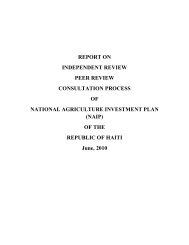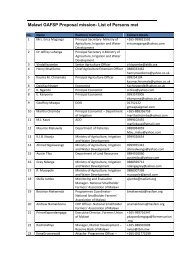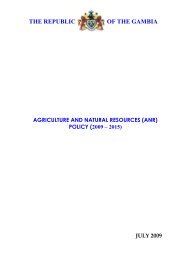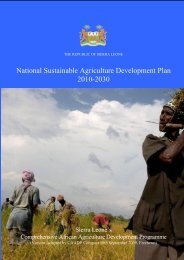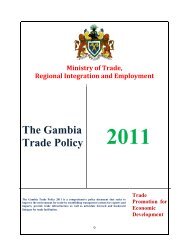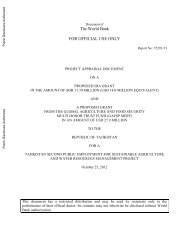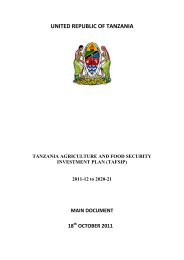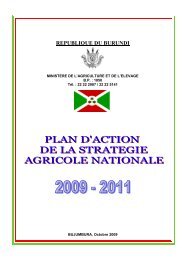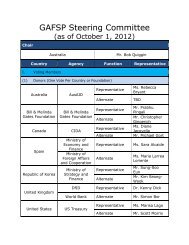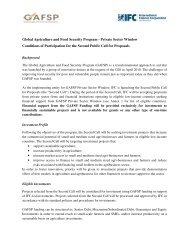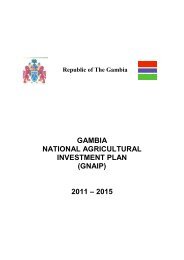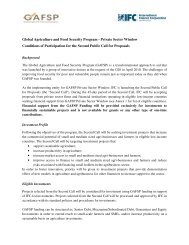Haiti: Poverty Reduction Strategy Paper; IMF Country Report 08/115 ...
Haiti: Poverty Reduction Strategy Paper; IMF Country Report 08/115 ...
Haiti: Poverty Reduction Strategy Paper; IMF Country Report 08/115 ...
You also want an ePaper? Increase the reach of your titles
YUMPU automatically turns print PDFs into web optimized ePapers that Google loves.
ii/ Guarantee reliable links between the small and medium-sized landlocked localities and<br />
access to disadvantaged urban neighborhoods under satisfactory accessibility and security<br />
conditions.<br />
iii/ Broaden participation in the decision-making process to counteract the domination of<br />
gangs and fill the void created by the absence of the State.<br />
iv/ Oversight over the network, user information, disaster emergency plan, mapping of<br />
sensitive zones.<br />
91 Objective 2: Promote the sustainable, balanced, and equitable development of the country<br />
i/ Take demand-side measures to spread demand better or its better distribution over space<br />
and time..<br />
ii/ Take supply-side measures through a balanced territorial development policy and through<br />
the development of suitably adapted and integrated transport infrastructure networks,<br />
prioritized on the basis of strategic planning.<br />
iii/ Promote the development of regional potentials and enhancing the competitiveness of the<br />
<strong>Haiti</strong>an economy<br />
iv/ Restore the balance of the national territory through the emergence of major regional<br />
metropolises by guaranteeing the continuity of national territory by protecting existing<br />
infrastructure and the environment.<br />
v/ Promote of multimodal transport by developing a strategy that emphasizes integration<br />
and complementarity so as to facilitate multimodal trade.<br />
92 Objective 3: Promote <strong>Haiti</strong>’s integration into the Caribbean area and into international trade<br />
i/ Develop <strong>Haiti</strong>’s international ports by improving the capacities of the other international<br />
ports in the provinces and foster the emergence of safe and regulated sea traffic in the<br />
Caribbean.<br />
ii/. Develop the airport sector by strengthening the institutional capacities of the entities<br />
responsible for air transport.<br />
iii/ Develop the road network for improved regional integration with the Dominican<br />
Republic for promoting tourism, and permitting the emergency of other poles of activity<br />
with investments under way making it possible subsequently to take medium-term<br />
requirements into account or needs in the longer term (the construction of crossing roads<br />
interconnecting the main roads).<br />
iv/ Attract foreign investors and international enterprises by granting port and airport<br />
concessions.<br />
ELECTRICITY SECTOR<br />
93 On the technical level, stress should be placed on the proven potential of hydroelectric, wind,<br />
solar, and even thermal energy. Such opportunities should be seized, and could well result in a<br />
significant improvement in the overall situation. DSNCRP is addressing all these issues in a<br />
comprehensive manner by laying out a modulated strategy focused on four types of objectives,<br />
six basic options, and an investment program prepared on a consensual basis.<br />
94 The objectives are:<br />
• Move away from the existing management system by definitively abandoning no-bid<br />
contracts, modifying the architecture of the EDH Board of Directors, and establishing a<br />
Directorate of Urban Commercial Grids at the MTPTC to exercise oversight over<br />
investment and regulatory decisions affecting this subsector.<br />
• Introduce a balanced pricing system consistent with the investments made so that the<br />
operator might receive adequate remuneration to: (a) have sufficient revenue to cover<br />
operating, maintenance, and investment costs and the costs of enhancing quality and<br />
service efficiency; and (b) contribute to the share of the social costs that the authorities<br />
may decide to assume in order to benefit low-income users.<br />
36



